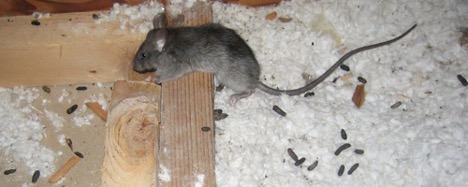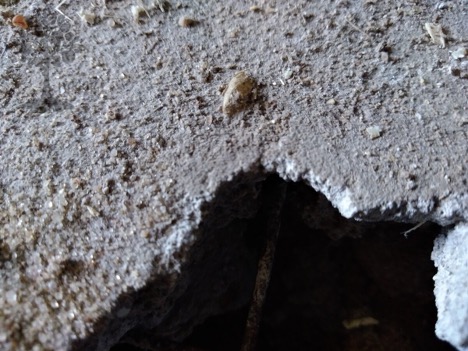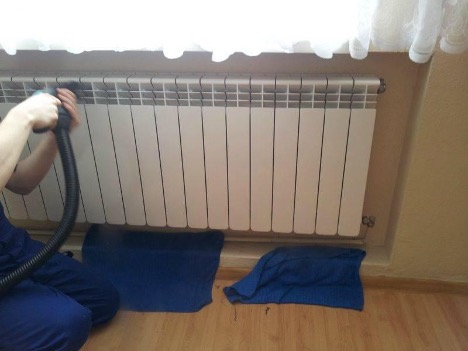Concrete, expanded polystyrene, polyurethane foam and rats: do they chew, what to do
There is a common myth that rats chew concrete, but in practice this is an extremely rare occurrence. Concrete is a very durable material, and rats find it difficult to chew through it. However, if the concrete has microcracks or is not uniform, then in some cases rodents may try to penetrate these weak spots.
The content of the article
Expanded polystyrene and rodents: do mice chew polystyrene foam?
Unlike concrete, polystyrene foam can become an object of attention for rodents. Do mice chew polystyrene foam? Yes, it is possible, especially if the material is easily accessible to them. Mice and rats can chew through polystyrene foam, using it to build their nests.

Foam against rodents: protective measures
The problem with rodent repellent foam is that spray foam can be attractive to rats and mice as nesting material. It is soft and easy to chew on by rodents, making it potentially vulnerable.
To protect foam from rodents, you can use the following methods:
- the use of protective nets or coverings designed for rodents;
- regular inspection and repair of areas with polyurethane foam;
- use of specialized repellents.
Do mice eat extruded polystyrene foam?
This material is less attractive to rodents than conventional polystyrene foam due to its denser and stronger structure. However, in the event of a severe rodent infestation and if there is access to the material, rodents may try to damage it or use it to build nests.
Myths and reality: do rats chew concrete and can a mouse chew through concrete?
Among the many myths associated with rodent behavior, one of the most common is the ability of rats and mice to chew through concrete. In reality, rats chew concrete extremely rarely. Concrete is a highly durable material that poses a significant barrier to rodent teeth. However, if there are small cracks or holes in the concrete structure, rats may try to expand them using their powerful jaws.

A similar situation exists with mice. The question of whether a mouse can chew through concrete often arises for many home owners. In practice, mice are not able to chew through solid concrete, but they can use pre-existing small cracks and holes to enter rooms. So, although mice cannot chew through concrete from scratch, they can still be persistent in finding ways to penetrate weak spots in the structure.
So, when it comes to what a mouse can chew through, it should be understood that its abilities are largely limited by the physical properties of the materials.Concrete in general is a fairly reliable barrier against rodent intrusion, but it is important to pay attention to maintaining its integrity, preventing the formation of cracks and holes that can become potential access points for pests.
What can a mouse really chew through?
The frequently asked question about what a mouse can chew through implies a misconception about the omnipotence of these small rodents. In fact, mice's ability to chew through materials is limited. They can easily penetrate soft or porous materials such as wood, cardboard, soft plastics and insulating materials. Mice are particularly effective at finding and enlarging pre-existing small holes and cracks in walls and floors, allowing them to enter buildings in search of food and shelter.
However, mice are unable to chew through harder materials such as solid concrete, metal or hard plastics. This means that homes and buildings built using these durable materials have a significantly lower risk of rodent intrusion. However, it is important to remember that even the smallest cracks and holes can become entry points for mice. Therefore, regularly inspecting buildings and sealing potential entry points are key measures in preventing the entry of these unwanted guests.
Effect on polyurethane foam
Polyurethane foam is often used in construction and repair to seal joints and insulate. However, its attractiveness to rodents, especially in uninhabited or poorly protected areas, raises certain concerns. Do rats chew polyurethane foam? Yes, rats and mice can chew on foam in search of cover or a way into a building.This material is not hard enough to resist rodents, making it vulnerable to their sharp teeth.
The problem with spray foam is not only that rodents can damage it, but also the potential danger for the animals themselves, who could get stuck or get hurt. Damaged foam loses its insulating properties and can allow moisture and cold to penetrate, which negatively affects the thermal insulation of the building. It is important to regularly inspect areas where polyurethane foam is used and, if necessary, take measures to protect against rodents, for example, use special protective covers or deterrents.
Conclusion
There are many myths about rats chewing concrete or mice chewing concrete, but in practice these materials remain out of reach of rodents. The main problem is polyurethane foam and polystyrene foam, which can attract rodents. Regular inspection and maintenance of the integrity of materials, as well as the use of protective products, will help keep your home safe from pests.





